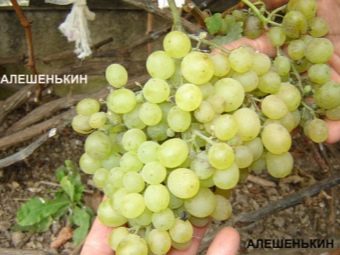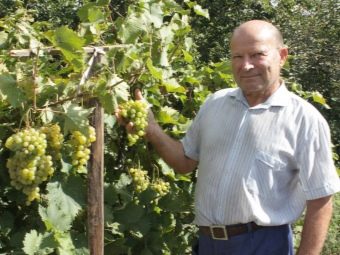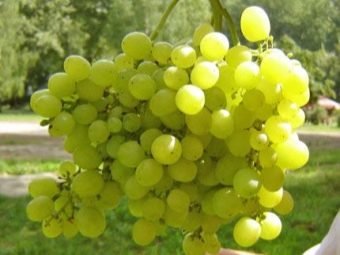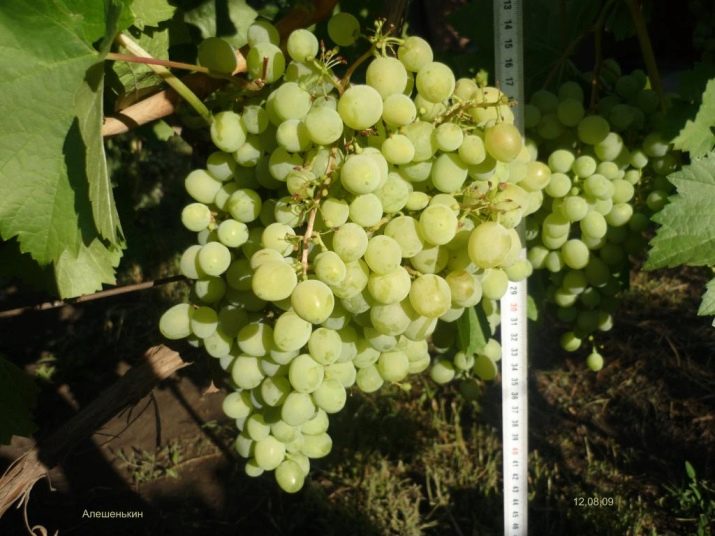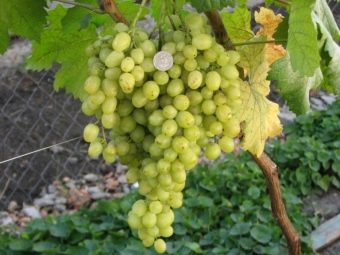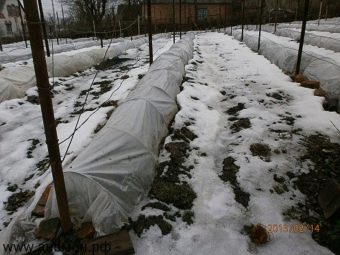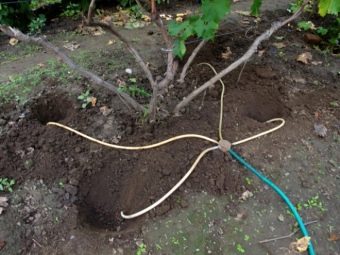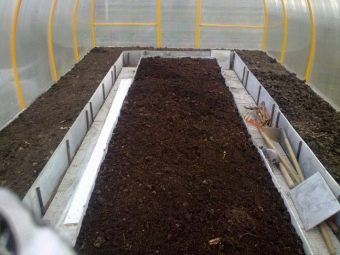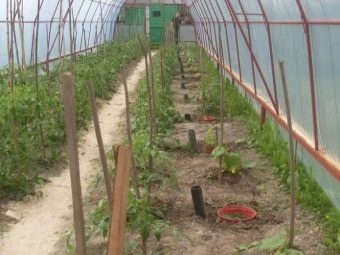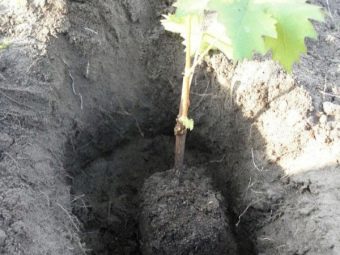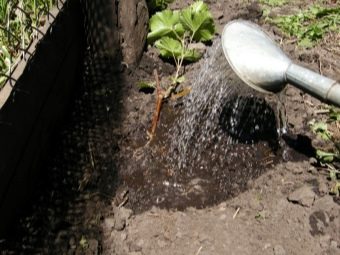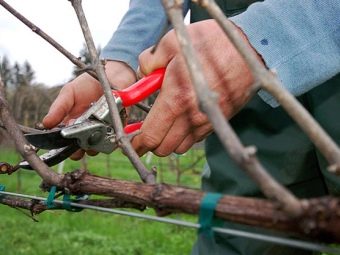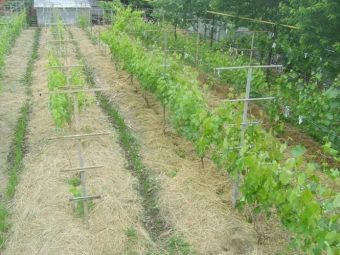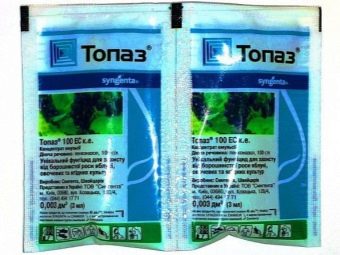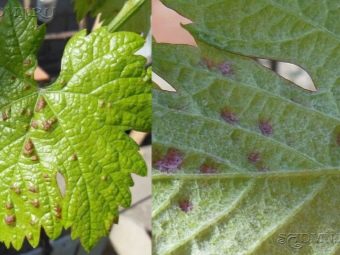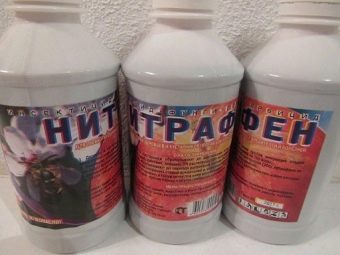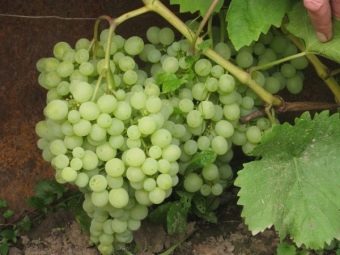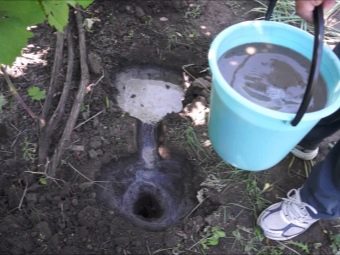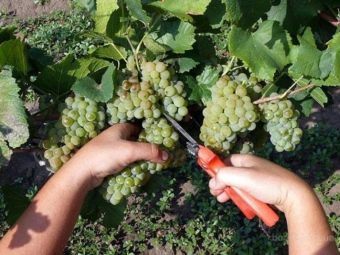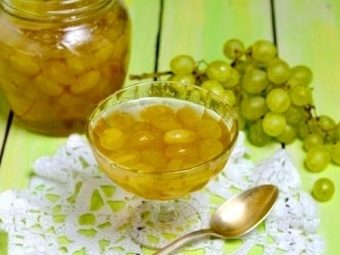Grapes "Aleshenkin dar": characteristics and agricultural technology varieties
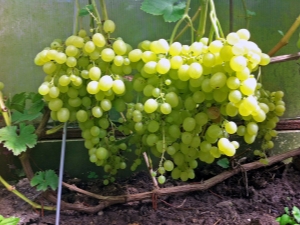
Unpretentious grape "Aleshenkin dar" is highly appreciated by many gardeners.But not everyone knows the history of the creation of a variety, its main advantages and its main disadvantages. Characteristics of plants, planting, care and tips on growing interest not only beginners, but also experienced gardeners.
History of creation
In the middle of the XX century in Volgograd Petr Efimovich Tsekhmistrenko artificially bred the Aleshenkin grape variety. In the name of his beloved grandson, the breeder named one of the most remarkable varieties, which was obtained by crossing a mixture of pollen from eastern grape varieties with flowers of the Madeleine Angéwin variety.
Siberian winegrower Fedor Ilyich Shatilov using clone selection made the variety more perfect: he increased the adaptive abilities of grapes to the conditions of vegetation, to temperature changes, to moisture deficit. The improved variety was named “Aleshenkin dar”. In the people of the grapes are often called affectionately: "Alyoshenka", "Alyosha". Variety is known as number 328.
Detailed description
A good characteristic of the dessert grape variety with excellent taste attracts many summer residents. "Alyoshenkin dar" - tall shrub with smooth shiny leaves of beautiful emerald color. Medium-sized five-bladed glossy leaves have a major stem along the length of the stem. Huge branchy loose clusters of grapes give the plant an attractive appearance. The brush has a conical shape, it can weigh 1.5-2 kilograms.
A round-shaped, light-green grape berry with an amber-golden shade and white bloom weighs approximately 3-5 g. The average size is 25x28 cm. Delicate skin of the fruit does not crack. Soft, juicy and firm grape pulp contains 16-20% sugar. No seeds in 40% of the berries. Harmoniously rich taste attracts the sweetness and juiciness of the fruit.
Fruits appear in the second year after planting. One vine can give 20-25 kg of grapes. The plant bears fruit for 6 years, then it must be renewed with pruning. With good care, according to the gardeners, the bush produces a crop for 20 years, after which it is uprooted.
With a sharp decrease in fruiting, the vine is removed from the site. The soil should rest for 3 years, after which the grapes can be re-cultivated on the plot. With the complete replacement of soil landing is carried out in a year.
Variety No. 328 characterizes the annual appearance of fruit buds, the presence of bisexual flowers on each shoot, inflorescence on the bottom shoot. Of the two matured inflorescences on the shoot, one must be removed, then the brushes will grow large.
“Alyosha” ripens early. Full maturity occurs in 115-120 days. In some regions, grapes are harvested at the beginning of July, in others - at the end of August. For the northern regions with a short summer warm period, this variety is a godsend. "Aleshenkin dar" has frost resistance: the aerial part of the grapes can withstand temperatures up to -26 degrees.
Virtues
"Aleshenkin dar" gives a high yield. It is in great demand among buyers. It is distinguished by early ripening. The unpretentious and plastic grade pleases with tasty sweet fruits in which a small amount of stones. Grapes perfectly tolerate long-term transportation, while maintaining an excellent presentation.
Shoots ripen well, do not need special care. Hardy cuttings root quickly, adapting to any climate. When growing in the northern regions, variety No. 328 is not susceptible to diseases and pests. Fruits even in the worst season.
For high yield does not require special effort. It is necessary to produce pruning, feeding, mulching, water the plant, fight diseases, pests and warm the sleeves for the winter. The plant can grow in any climatic conditions of Russia.
disadvantages
The roots of the plant are sensitive to frost, so the lower part of the bush should be carefully insulated for the winter.To cope with this disadvantage, gardeners plant grafts, combining "Aleshenkin dar" with a more frost-resistant rootstock.
The root system needs recharge.
Shadow and excess moisture is detrimental to this grape variety. High humidity contributes to the appearance of fungus, covering the leaves with mildew. This grape variety is subject to powdery mildew: mildew is false, oidium is present. It is quite possible to get rid of this drawback: if the agricultural technology is observed, “Aleshenkin Dar” practically does not get sick.
Polos are caused by a lack of pollination. To eliminate this drawback, it is necessary to timely treat the bushes with a growth stimulator.
Planting and care
For this variety, there are special rules for planting and care.
Soil should be prepared in the fall, although it is possible in the spring. To soil variety unpretentious. Gardeners do not recommend the use of moorland and saline soil. Grapes can not survive there and die. The soil should be black earth or loamy. It is best to use a mixture of humus, chernozem and river sand with the addition of nitrophosphate (50 g) and superphosphate (50 g), which serve as feed for seedlings in spring.
The soil should not contain a lot of clay, in this case it is better to install additional drainage, mix with black soil. Sand is necessarily added to peat soil. Sour soil requires the addition of lime. To enrich the sandy soil requires compost, you can fertilize sod land, humus. Soil digging up and enrich with oxygen about half a month before planting grapes.
The place is picked up sunny in the south-west or south of the site, preferably not far from the wall of the house. Snow begins to thaw there, and in the fall the ground does not freeze through longer. The distance between the rows should be at least two and a half meters, and between plants - at least one and a half meters.
Placement on the site does not matter, if only the bushes are located in a bright and warm place, protected from drafts and strong winds. Trees and large shrubs should not create a shadow of the grapes "Aleshenkin dar." Film greenhouses are well suited for growing this variety.
In the autumn, it is necessary to dig a hole with a width and depth of 0.6 to 0.8 m, to prepare a drainage, for which crushed stone, expanded clay, and crushed bricks are well suited. The thickness of the drainage - 5-10 cm. Planted seedlings in the spring, after past the last frost. The soil is dug up to enrich it with oxygen and drying. A bucket of warm or hot water will need to be poured into the well just before planting.
It is better to use cuttings with a closed root system. If the seedling is open, it must be borne in mind that the light color inside the cut indicates the high quality of the cutting. The dark color of the spine indicates its poor quality. Leaf irregularities are a sign that the plant is infected with pests.
When planting, the cuttings should be tilted at an angle, rather than vertically, then it will be convenient to prepare them for wintering in the fall. If the seedling was in a plastic bag, it must first be placed in "Zircon" for 14 hours. Soaked a quarter of the cutting immediately before planting. Zircon stimulates root growth. A milliliter of natural remedies must be dissolved in ten liters of water. The effect will double when mixing "Zircon" with heteroauxin: two hundred milliliters per liter of water.
A handle that was not wrapped in polyethylene does not require any pre-treatment with Zircon. It can be immediately planted at the bottom of the hole, half fill the ground, pour water, add soil to the top. Then the seedling is wrapped with plastic wrap, a cut is made for the cutting. The film is removed in August.
After planting, the plant is watered every 14-15 days. On one bush leaves 4 buckets of liquid. When waterlogging can rot the roots, so irrigation is better to stop.During growth and fruiting, it is necessary to regulate watering, to prevent the retention of fluid under the plant. To avoid the appearance of a dense crust on the surface of the earth, it is necessary to loosen the soil after each rain. During the preparation for the winter, the watering of the grapes is resumed.
In spring, old branches should be removed from the vine, as well as defective, damaged, damaged branches. Snap to the trellis. Top dressing with superphosphate, a solution of mullein or ash is carried out before blooming. Flowering begins in May. When the plant reaches a height of 1.7 m, it should be pinned.
Leaves covering inflorescences must be removed. Vines need to be treated with a growth stimulator so that the berry does not grow shallow.
To increase the yield of the bush requires the formation. It is necessary to break off the branches that do not bear fruit. For the correct location of the inflorescences should be about 38-40 eyes on each bush. When pruning, 15 buds are left on each branch and 3 shoots in case a crop was harvested from a bush last summer. When awakening the buds in spring, save only the lower shoots. Young branches, which usually leave 4 buds, are tied to a wire.
Crop length is performed twice a year. Long pruning implies the remaining 9 or more eyes, the average - 5-8 buds, short - no more than 4 shoots. The tops of the brush are cut to ripen to even.
Mulching is necessary in order to improve the air permeability of the root system, preserve the soil moisture, prevent the emergence of weeds, enhance the nutrition of the soil, and protect the fertile layer from leaching. By mulching in the northern zones, the root system is warmed, and in the southern zones, the upper layer of the soil is protected from drying out.
Depending on the purpose for which the soil is mulched around the bushes of grapes, they choose material: fallen leaves, mowed grass, fir branches or needles, pine spruce, reeds, peat chips, humus, compost, sawdust.
To prevent fungal diseases, the plant is sprayed with lime mortar, oidium - with Topaz, mildew with Ridomil Gold fungicide. Hornets and wasps inflict damage to the vineyard, flying to the aromatic scent of berries. It is necessary to get rid of all wasp nests in the area in advance. It is necessary to attach traps with sweet baits for insects to the trellis.
A spider mite can be recognized by leaf swelling. Spider mite, or grape pruritus, often settles on the lower leaves of the vine and absorbs their juice. The fight against it begins in early spring with the help of "Phosphamide" and "Nitrafen". To eradicate the marble crust, hexachlorane is introduced into the soil. The two-year-old moth is also destroyed by chemical and agrotechnical methods.
Prevention will be the maintenance of suitable moisture, timely ventilation of plants: not too thick bushes, removal of excess shoots.
Damaged branches, weeds and dry leaves should be removed immediately so that they do not serve as food for pests and do not contribute to the breeding of insect larvae.
Gardeners tips
Reviews of gardeners indicate that "Aleshenkin dar" is one of the most favorite grape varieties of most summer residents. Even in the worst season, the harvest is at least 15 kg. The variety has huge bunches - the berries inside the brush cannot mature. It is necessary to remove them in time, because with such a large load the vine cannot reach, which often leads to the death of the bush.
According to the observation of gardeners, the fewer eyes remain after the formation of a bush, the earlier ripening begins, and the berries are sweeter. Be sure to cut long clusters and unnecessary wings. Formation is best done before and after flowering. For the first feeding, an infused week of manure in a 1: 2 ratio with water is well suited, then it is diluted with water 1:10. 1 liter of solution is spent on a bush.
A liquid mixture is well suited for feeding grapes: you need to take 20 grams of nitrophos for a bucket of water, 50 grams of ashes, 30 grams of superphosphate and 30 kg of manure. Nitrophoska, ash, potassium and superphosphate are used as the last top dressing, carried out, as a rule, at the end of June.
Although "Aleshenkin dar" and refers to frost-resistant varieties, but the root system must be warmed for the winter. When the old sleeves begin to thicken, they are difficult to prepare for the winter. Gardeners are advised to form new ones and get rid of old ones.
After harvesting, the remaining Alyosha sleeves are placed in trenches and carefully covered with a tarpaulin, film or moisture-proof cloth, sprinkled with earth, and a layer of mulch is added. It is necessary to perform this procedure upon the occurrence of a stable negative average daily temperature, so that the laid shrub does not blink.
The sleeve must be laid dry, so it is better to do it in windy or sunny weather. The vine should be under the snow in winter, after thawing which in the spring the layer of mulch is removed.
To understand that you can harvest, you need to look at the stem, which at the junction with the stem is woody. The berries become sweet, they are easy to tear off the brush. The bones become dark and easily move away from the pulp.
Experienced gardeners recommend picking grapes in the evening time or in the morning on dry days when there is no dew on the fruits. Bunches should be plucked, and it is better to cut them with shears, very carefully, so as not to damage the wax coating, which contributes to the long-term preservation of the fetus. The early ripe grade is not stored for a long time.
Mistresses use grapes for making fruit salads, juices, stewed fruit, jam, jam.
On how to plant grapes, see the next video.

